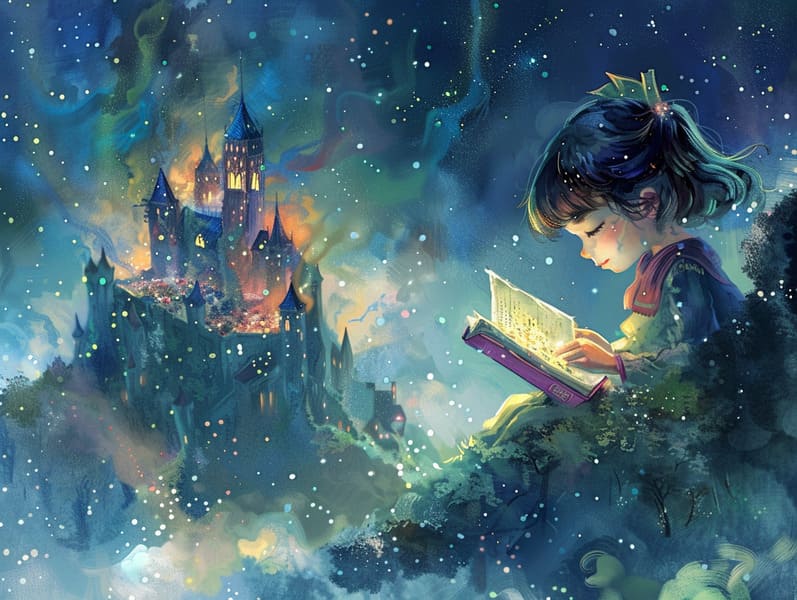The Story Behind Ancient Fairy Tales and Its Steadfast Captivation.
The Story Behind Ancient Fairy Tales and Its Steadfast Captivation.
Blog Article

Children's fairy tales have deep roots. These tales have been passed down from one generation to the next far before they were ever transcribed. They developed from a variety of civilizations, including American traditions. They were initially transmitted among grown-ups, often carrying themes and messages concerning the societal norms and beliefs of the time.
The famous Grimm duo, Jacob and Wilhelm (the Grimm brothers), were among the first to compile and release many of these beloved tales. Their anthology, "Grimm's Fairy Stories," included stories like "The True Bride," "Little Brother and Little Sister," and "The True Story of Snow White," which have since become staples in the world of classic fairy tales. Similarly, Andersen's imaginative stories, such as "The Little Mermaid," and "The Ugly Duckling," have won hearts worldwide, establishing their place in the pantheon of beloved fairy tales.
Despite being ancient, these tales remain as significant as ever, especially as children's bedtime stories. These charming stories are now available in diverse formats, including beautifully illustrated books, charming animations, and online fairy tales.
Their continued relevance can be credited to several captivating elements:
Ethical Lessons: Classic fairy tales often convey important moral lessons. Fairy tales like "The Boy Who Cried Wolf" teach the virtue of being truthful, while "The Tale of the Tortoise and the Hare" demonstrate the virtues of steadfastness and unassuming nature. These tales offer young readers clear distinctions between virtue and vice, building their moral compass in a tender yet important way.
Sympathy and Perception: Old fairy tales frequently showcase beings facing trials and tribulations, inspiring listeners to empathize with their struggles and support their triumphs. For instance, "Beauty and Her Beast" shows us the necessity of looking beyond appearances to comprehend the inner core of a character, developing empathy and recognition.
Cultural Recognition: Many fairy tales are interwoven with the cultural contexts from which they were born. Reading these stories can provide intriguing perspectives into different backgrounds, strengthening a sense of cultural respect and discernment.
Fantasy and Innovation: The magical elements in fairy tales—supernatural elements—motivate children’s inventiveness. These fairy tales bring readers to extraordinary realms, enhancing innovative ideas and a sense of excitement that remains a lifetime.
Classic fairy tales are not only spellbinding but also instructive. They provide enchanted tools in enhancing various thinking and feeling skills in little ones. When ancient fairy tales are narrated, they foster language development by showing new linguistic elements and sophisticated sentence structures. This practice also enhances hearing perception and mental focus, as the young stay focused, prepared to see what happens next.
Furthermore, discussing the themes and characters of classic fairy tales can advance reasoning skills and thought processes. Young ones are educated to discern patterns, anticipate outcomes, and know cause and effect. These examinations also ease little ones convey their thoughts and feelings, nurturing their emotional intelligence.
In today’s electronic age, the abundance of internet fairy tales has made these stories more attainable than ever. check here Internet resources and mobile apps make available broad selections of traditional fairy tales that can be perused or listened to anytime, anywhere. Fairy tales told out loud are particularly widespread, extending an interactive way for the young to relish these enchanting tales. Voice books and narrated videos lead characters and settings to life, often supported by bewitching harmonies and tunes that boost the tale journey.
The timeless fascination of classic fairy tales lies in their ability to adapt to today's society while keeping their central messages. Contemporary renditions of these stories often integrate more different characters and modern settings, making them meaningful to today’s audience. However, the essential messages of fortitude, warmth, and integrity remain unchanged, continuing to connect with kids of all ages.
Classic fairy tales also offer a sense of peace and understanding. They deliver up a orderly narrative with a obvious beginning, middle, and end, often wrapping up with the culmination of conflicts and the triumph of honesty over deceit. This consistency can be calming for young readers, extending a sense of stability in an unpredictable world.
Classic fairy tales continue to fascinate and edify new generations, maintaining their fascination and pertinence in modern society. As kids' bedtime tales, they share a perfect blend of enchantment and education, sustaining moral values, empathy, and creativity. The existence of internet fairy tales and the likability of fairy tales recited assure that these classic narratives remain obtainable to new generations.
By continuing and relating these tales, we continue to revere the rich tapestry of inventiveness and cultural heritage. Whether you are delving into a richly illustrated book, seeing a web collection, or listening through an read-aloud book, the appeal of traditional fairy tales is always within reach. These fairy tales point out of the endless nature of storytelling and its ability to bind us across eras and regions.
If you are experiencing a artistically illustrated book, exploring a online library, or listening to an audio story, the beauty of popular fairy tales is always within reach.
These tales demonstrate of the unchanging impact of storytelling and its ability to connect us across centuries and lands, making a tie that enchants and educates alike.